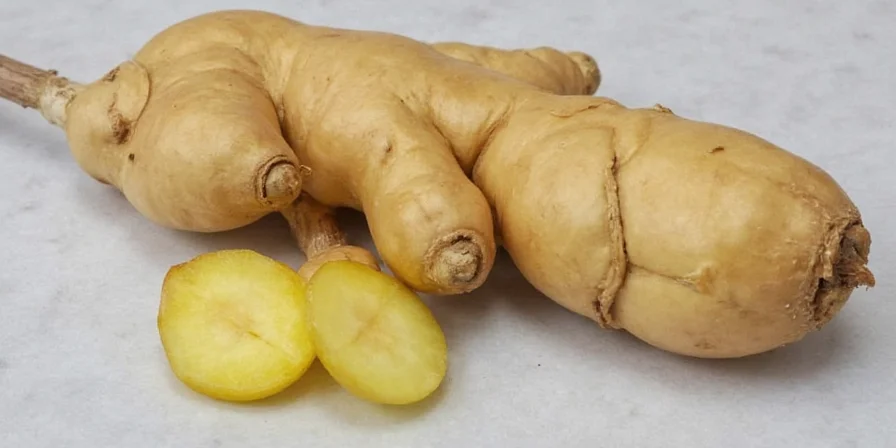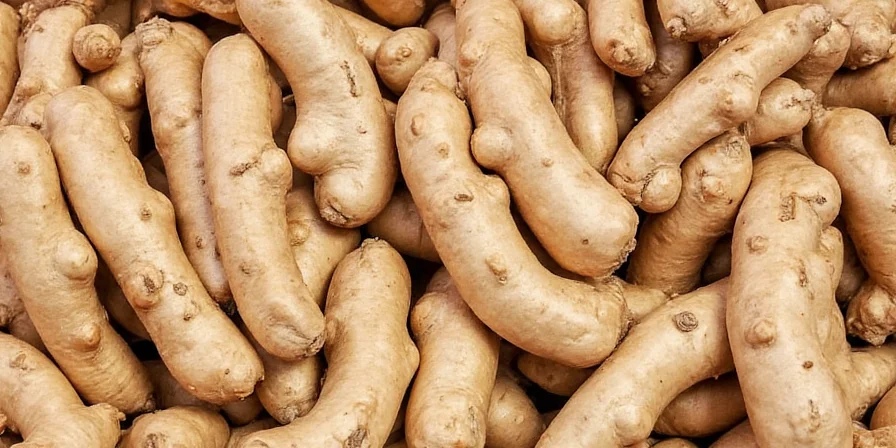Galangal Ginger Root: Spicy Secrets Behind the World’s Most Underrated Spice!
When it comes to Global Spice Traditions, few roots are as mysterious and misunderstood as galangal ginger root. While ginger has become a household name in spice cabinets across the globe, its bold cousin, galangal, often gets overlooked. But don’t be fooled — this knobby, earthy rhizome packs a flavor punch that could rival any chili or clove. In this article, we’ll explore what makes galangal so special, where it came from, how to use it like a pro, and why you might want to give it a starring role in your next dish.
Table of Contents
- What Is Galangal Ginger Root?
- A Brief History of Galangal Across Global Cuisines
- Galangal vs. Ginger: What’s the Real Difference?
- How to Use Galangal Like a Local Chef
- Health Benefits You Didn’t Know About
- Where to Buy It & How to Store It
- Common Mistakes to Avoid When Cooking with Galangal
- Top 5 Recipes That Shine With Galangal
- Summary & Takeaways
What Is Galangal Ginger Root?
Also known as blue ginger, galangal is a rhizome native to Southeast Asia. Despite its common nickname, it’s not actually related to true ginger (Zingiber officinale) but belongs to the same plant family — Zingiberaceae. There are two main types:
- Greater galangal (Alpinia galanga) — More aromatic and spicy
- Lesser galangal (Alpinia officinarum) — Used more in traditional Chinese medicine
It has a crisp texture and a sharp, peppery flavor with hints of pine and citrus — think if ginger and cardamom had a baby raised by eucalyptus leaves.

A Brief History of Galangal Across Global Cuisines
Long before Instagram food trends and fusion cuisine took off, galangal was already making waves across ancient trade routes. Here’s a quick history lesson on how this spice traveled the world:
| Region | Historical Use |
|---|---|
| Southeast Asia | Essential in Thai curries, Indonesian rendangs, and Malaysian laksa soups |
| India | Used in Ayurvedic medicine for digestive health |
| Arab World | Included in early spice blends traded along the Silk Road |
| Europe | Briefly popular during medieval times, often confused with ginger |
Galangal vs. Ginger: What’s the Real Difference?
You might wonder: “If they’re both roots and sound similar, can I just substitute one for the other?” Well, here’s the breakdown:
| Feature | Galangal | Ginger |
|---|---|---|
| Flavor Profile | Peppery, pine-like, slightly citrusy | Spicy, sweet, earthy |
| Texture | Harder, almost woody | Soft and fibrous |
| Best Used In | Soups, broths, and slow-cooked dishes | Baked goods, marinades, teas |
| Substitution Tips | Can use ginger in a pinch, but flavor will differ | Not recommended to substitute galangal for ginger in authentic dishes |

How to Use Galangal Like a Local Chef
Want to unlock the full potential of galangal? Here are some pro-level techniques and tips straight from kitchens around the world:
- Don’t peel it — The skin adds extra aroma when sliced thinly
- Use a microplane or mortar — For sauces or pastes, finely grate fresh galangal
- Add it early in cooking — Let the flavors infuse into broths and oils
- Dry or freeze leftovers — Fresh galangal doesn’t last long at room temperature
- Pickled galangal rocks — Use pickled slices in sandwiches or as garnish
Health Benefits You Didn’t Know About
Turns out, galangal isn’t just tasty — it’s also got some serious health benefits up its sleeve. Traditional medicine in China and Thailand has long used galangal for various ailments, and modern research supports some of these claims:
- Digestive aid: Helps reduce bloating and indigestion
- Antibacterial properties: May help fight off harmful bacteria
- Anti-inflammatory effects: Great for people with arthritis or chronic inflammation
- Improves circulation: Promotes better blood flow and warmth in cold climates
- May enhance cognitive function: Some studies suggest it boosts memory and focus
Where to Buy It & How to Store It
Finding galangal outside of Asia used to be tough, but thanks to globalization and growing demand for global flavors, you can now find it in many places:
- Asian supermarkets (especially Thai, Vietnamese, or Indonesian stores)
- Online spice retailers
- Some organic grocery chains
- Frozen sections in specialty markets
Pro tip: Look for firm, dry pieces without soft spots. If fresh isn’t available, frozen or dried slices work well too.
Storage: Keep fresh galangal in the fridge wrapped in plastic or foil. It can last up to a month. For longer storage, slice and freeze it in airtight bags.
Common Mistakes to Avoid When Cooking with Galangal
Even experienced cooks sometimes make rookie mistakes with galangal. Don’t fall into these traps:
- Using too much — Its flavor is strong; start small and adjust
- Using the wrong type — Lesser galangal is less fragrant and harder to find
- Cooking it too late — Add it early to let flavors develop
- Trying to eat it raw — Not as enjoyable raw compared to ginger
- Throwing it away after one use — Reuse leftover pieces in stocks or teas

Top 5 Recipes That Shine With Galangal
If you’re ready to dive into the world of galangal-based cuisine, try these five crowd-pleasing recipes that showcase its unique flavor:
- Thai Tom Kha Gai Soup — A creamy, coconut-based soup with chicken and lemongrass
- Indonesian Rendang — Slow-cooked beef stew with spices, including galangal
- Malaysian Laksa Soup — A spicy noodle soup with a rich curry base
- Galangal Chicken Stir-Fry — Quick and easy, perfect for weeknights
- Galangal Tea — A warm, soothing drink with a twist of peppery spice
Summary & Takeaways
Galangal may not have the name recognition of turmeric or garlic, but once you discover its unique taste and versatility, you’ll never go back. Whether you're a home cook experimenting with global flavors or a professional chef looking to add depth to your menu, galangal ginger root deserves a spot in your spice rotation.
- Galangal is not ginger, but they share similarities in appearance and usage
- Its distinct peppery, citrusy flavor sets it apart in global cuisines
- Great for soups, stews, and spice pastes — especially in Southeast Asian dishes
- Offers numerous health benefits, from anti-inflammatory properties to improved digestion
- Easy to store, and increasingly available even outside its native regions
So next time you see that gnarly-looking root in the market, don’t walk past it — grab it, grate it, simmer it, and savor it. Because when it comes to Global Spice Traditions, galangal ginger root is one of nature’s spiciest secrets waiting to be discovered.
Final Word
From Bangkok street carts to Toronto food trucks, galangal is having a moment — and rightly so. Whether you're exploring the spice for culinary curiosity or wellness reasons, there's no better time than now to get to know this flavorful rhizome.











 浙公网安备
33010002000092号
浙公网安备
33010002000092号 浙B2-20120091-4
浙B2-20120091-4